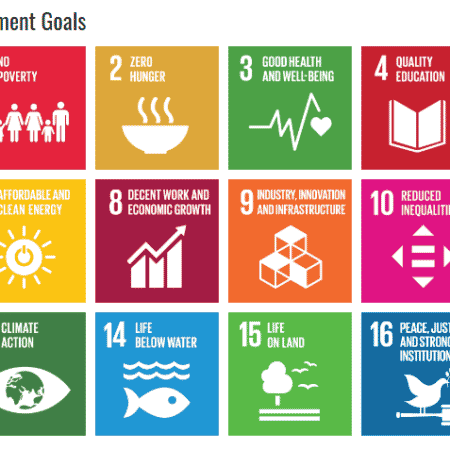
Pakistan Institute of Development Economics
- Home
Our Portals
MenuMenuMenuMenuMenuMenuMenu - ResearchMenuMenuMenuMenuMenuMenuMenu
- Discourse
- The PDR
- Our Researchers
- Academics
- Degree Verification
- Thesis Portal
- Our Portals

SDGs and Donor Involvement
Question a layman about SDGs and you will get a blank look or skeptical concern about donor agendas. Raza Rumi’s view (a senior Pakistani political analyst) at a PIDE event on SDGs put things into the proper holistic perspective “SDGs are statements of good intentions, the problems come when we turn to a donor for implementation”.
But then where does the problem lie? It is evident, as per Rumi’s statement that the issue is not in the SDGs themselves. Local ownership of these goals is difficult when we do not find sufficient capacity to implement the projects needed to achieve the targets both monetarily and in terms of skilled human capital. In my view, implementation is the key issue, and yes, it needs to be debated that how and why we have always looked towards donors – a discussion that I shall turn to in the end. Developing countries look at SDGs with suspicion for historical and technical reasons.
Firstly, how MDGs came about and their later transition to SDGs needs to be understood. The donor engagement with the developing world is not a current phenomenon. Evaluation of various such donor projects all over the world has shown them to be having a minimal impact (World Bank Report (1998)). The classic case of this is the Structural Adjustment Program (SAP) in Pakistan, which resulted in a lot of leakages. Within this program, one of the critical focus was to increase educational and health outcomes; however, despite massive injections of donor’s money, there was no evidence of any notable improvement.
Many developing countries witnessed similar failures of donor projects. This led to a need within the developed world to have developing countries commit to specific developmental goals and targets. This process of commitment started with MDGs and has continued through SDGs. So in one way, both MDGs and now SDGs are engagements with donors to use both funds generated through external financing Official Development Assistance (ODA) and internal financing effectively.
Secondly, the process of what targets to set is something that perplexes me. Who was involved in the consultative process of setting targets? Was the voice of people from developing countries included in the consultative process? Why are some targets relative, and some are absolute? And finally, why all the UN evaluations are using fulfillment and non-fulfillment criterion for defining success and failure and not accounting for with what extent a country missed or achieved the target.
Developing countries are trapped not just in developmental but also intellectual traps so the process of how these goals are decided likely involves little input from them. But does this not compromise the autonomy of developing countries in setting their developmental priorities? Or lead us to think at the broader question that who should set policy direction within developing countries – the donor or the people themselves?
Thirdly, in an attempt to have developing countries generate internal financing, it is being stressed that these countries expand their capacity to tax. In theory, this seems right, but given most of these countries (including Pakistan) have a regressive tax system. So there needs to more debate and discussion as to how will the burden of this extra resource mobilization be shared?
Finally, we come to the question of why SDGs implementation cannot be perceived without donor help, and what problems lie within this structure? Let us elaborate on this in the context of Pakistan. The biggest challenge within this engagement is that the donor tends to find it easy to deal with a few sets of contact points, which limits them to bureaucracy only with no role of academics, civil society, and elected representatives. Hence given the lack of debate on donor projects, this very structure presents an avenue of leakages.
To top it off, not only is the government of Pakistan facing significant issues within civil services but also in the devolution process itself. For example, consider the case of devolution structures operating for education delivery within Punjab. What has been observed with this ongoing system is that all devolution has done is to increase the size of the administrative structure resulting in a horizontal shift of power among education secretaries at different levels of provincial management. Hence the aid disbursed through this system does not reach the grassroots levels on the count of leakages and lack of coordination, resulting in failures later on.
Finally, the research base and local human capacity are also very slim within Pakistan. There seems to be an intellectual poverty trap going on in which engagements with donor has unintended negative consequences for local capacity building. Donor funded projects drive research through monetary incentives. But donor research interest may not coincide fully with the developmental priorities of our country. So cumulatively, this process tends to produce incomplete knowledge base both in terms of research and human capital, leading to a vicious cycle. Our planners working with limited local capacity tend to favor donor consultative help in project implementation. Since we rely on donors so much for money and implementation at the supervision level, our local knowledge base does not develop.
In light of the above reasons, it is fair to say that though SDGs direct the developing countries towards the right developmental trajectories. Yet, there is an underlying problem of the unending flow of aid to this country. Hence the issue of local ownership of SDGs within its implementation has its base in the very question that will foreign aid ever stop; and if so, how?
Download full PDF


